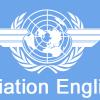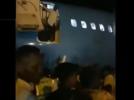Qantas B738 at Canberra on May 9th 2014, kids are no adults
A Qantas Boeing 737-800, registration VH-VZO performing flight QF-719 from Canberra,AC to Perth,WA (Australia) with 150 passengers, was accelerating for takeoff from Canberra's runway 35 using an unusual takeoff configuration of flaps at 1 degrees due to a near max takeoff weight departure. When the aircraft reached Vr the captain, pilot flying, attempted to rotate the aircraft but needed excessive control force as the aircraft appeared nose heavy. Being aware of the possibility of a tail strike if too much back force was being applied to the yoke, the captain applied more than normal firm backpressure to ease the aircraft into the air, the aircraft exceeded V2 by more than 25 knots as it became airborne and climbed out a faster airspeed than normal and below required climb gradient but without loss of terrain/obstacle clearance. After being established in the initial climb the captain trimmed the aircraft to ease the backpressure, a brief discussion amongst the captain and first officer occurred suggesting the unusual back pressure might have been the result of the flaps 1 configuration and the group of children amongst the passengers. The crew continued the flight normally for a safe landing in Perth about 4.5 hours later.
The Australian Transport Safety Bureau (ATSB) released their brief final report releasing following safety message:
The ATSB SafetyWatch highlights the broad safety concerns that come out of our investigation findings and from the occurrence data reported to us by industry. One of the safety concerns is data input errors. In this incident, the crew entered and checked the data supplied to them, however the original passenger weight data at check-in was not accurate.
Determining accurate weight and balance is required for all aircraft prior to flight. Use of an incorrect trim setting for the aircraft’s actual weight and balance may adversely affect the aircraft’s controllability during flight. In larger aircraft, automated systems have been designed to replace manual processes for calculating the aircraft’s weight and balance. Validation of the data entered into these systems is essential to ensure accurate loading information is provided to flight crew.
The ATSB reported that amongst the 150 passengers there was a group of 87 primary school children, who were seated together in the aft cabin. However, all passengers had been checked in using the standard adult weight of 87kg per person. As a result, the loadsheet overstated the takeoff weight by about 3.5 to 5 tons (7700 to 11000lbs) and put the takeoff stabilizer trim off correct setting by about one unit.
The weight discrepancy would have resulted in a Vref of about 1-2 knots less on approach to Perth as well, however, no anomaly occurred during the approach.
The ATSB reported that the group of children had been pre checked two days before the flight accepting e-mail via the group check in facilities. The fields for young children and children was left blank in that e-mail, the agent receiving and processing the e-mail assumed all members of the group were adults. The weight to be assigned to primary school children of 32kg per child was thus not applied to any of the passengers.
The ATSB also stated that the gate agents were not able to modify the weight of passengers/change passenger category from adult to child or vice versa once the passenger had already been checked in.
The airline as well as Australia's Civil Aviation Safety Agency took a safety action each as result of the occurrence.
http://avherald.com/h?article=479c2665














Komentarze